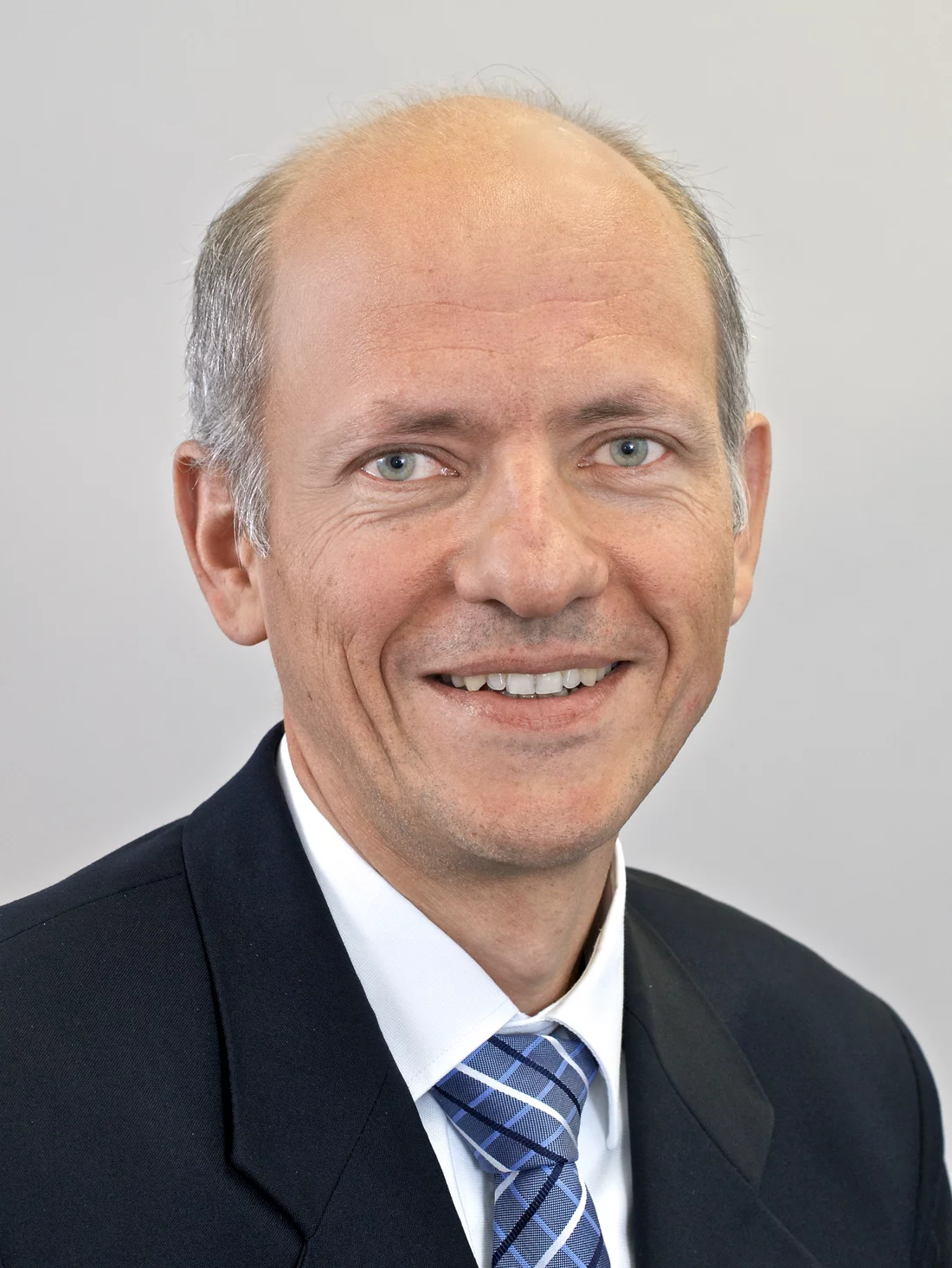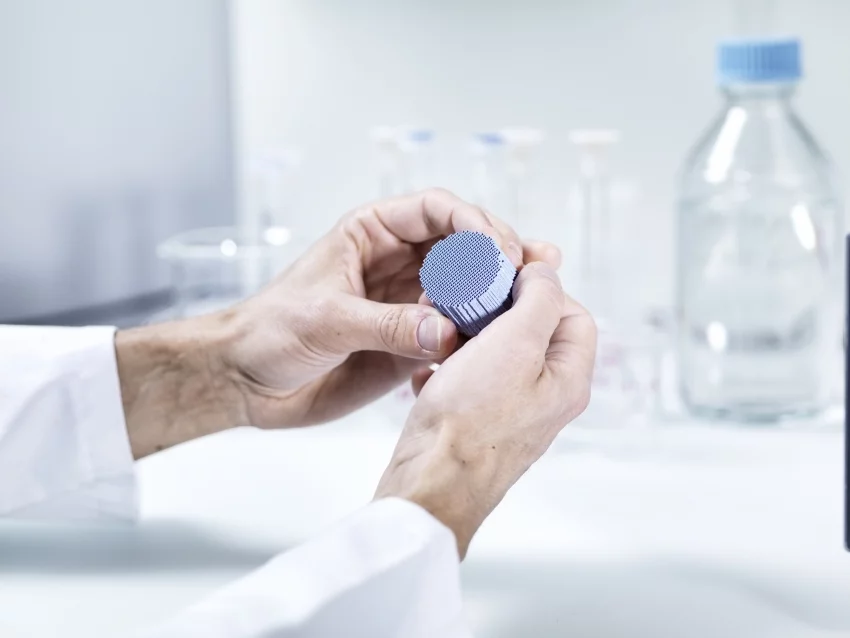Exhaust gases produced by diesel combustion are freed from harmful nitrogen oxides with the aid of an aqueous urea solution. That’s the state of the art. The urea decomposes into ammonia and this, in turn, reduces the nitrogen oxides into harmless nitrogen. However, the urea solution can produce undesirable solid residues and, in addition, freeze in extremely cold weather. Now researchers at the Paul Scherrer Institut (PSI) have developed a catalyst which can be used with better reducing agents than urea for nitrogen oxide reduction.
Urea has long been known as a means for countering the unwanted emissions of nitrogen oxides from diesel vehicles or diesel emergency generators. When it is injected into the exhaust gas stream as an aqueous solution, urea decomposes quickly to form ammonia. Ammonia, in turn, reduces the ecologically damaging nitrogen oxides into harmless nitrogen gas. However, the by-products of these chemical reactions can unfortunately be deposited in the exhaust and impair its function. In addition, the urea solutions freeze at a temperature of just -11°C, making it difficult to use them in colder climates. For some time now researchers have therefore been seeking alternatives to the urea solution which has been commercially used in diesel vehicles since 2004.
Among the top candidates are salts of formic acid, known as formates, which are also rapidly converted to form ammonia and, moreover, have a lower freezing point and higher stability at high temperatures. However, these salts also form troublesome by-products: first of all, formic acid itself – one of the most corrosive of all organic acids. The further conversion of formic acid can result in carbon monoxide, unwanted formamide as well as the highly toxic hydrocyanic acid.
The chain of unwanted by-products can, however, be broken by promoting the “right” reactions or by suppressing the “wrong” reactions through the use of a suitable catalyst. The question now is how to achieve production of ammonia free of by-products based on formates, i.e. which catalyst exactly is to be used to successfully produce ammonia, without producing unwanted by-products at the same time. A team from the Paul Scherrer Institut working with the German chemical company AlzChem AG has recently discovered the answer to this question. AlzChem has filed a patent application for the guanidinium formate salt (GuFo) as an excellent replacement for urea in order to prevent nitrogen oxide emissions. This salt is characterized by a number of advantages, namely it is very soluble in water and can store more ammonia per liter of solution than urea. In addition, GuFo has a much lower freezing point than urea solutions and better thermal stability at high temperatures, meaning that it can be stored for a virtually unlimited period of time at high summer temperatures.
The curse of the by-products dispelled
However, the problem of the by-products still remained. Like urea, GuFo can of course also form formic acid together with its noxious derivatives carbon monoxide, formamide and hydrocyanic acid. PSI researchers, led by Oliver Kröcher, Head of the Bioenergy and Catalysis Laboratory, have recently discovered a solution. Following numerous detailed investigations they deduced that a catalyst based on gold nanoparticles on a substrate of titanium dioxide (TiO2) could possess all of the properties which they were seeking for this application. This prediction then proved to be true during a series of laboratory experiments conducted by the scientists, which involved spraying GuFo solution onto the catalyst at temperatures above 250°C. GuFo was completely decomposed on the TiO2 substrate to form ammonia. In the process the theoretically possible release of formic acid was completely suppressed, as this was very quickly broken down into CO2 thanks to the gold catalyst. In addition, the reaction products methanamide and hydrocyanic acid were not produced.
Promising long-term stability
Surprisingly, the fact that gold is a highly active catalyst material was only discovered a few years ago. Nevertheless, there are virtually no practical applications of gold catalysts, since they only have limited stability. Not a great deal is achieved, if a catalyst selectively controls a chemical reaction in the desired manner, producing a high yield, but is deactivated after a few reaction cycles.
Kröcher and his colleagues therefore investigated how resistant their newfound gold TiO2 catalyst was to the harsh conditions in a diesel engine exhaust. To do this, the researchers subjected their catalyst to a so-called hydrothermal stability test. The combination of heat and high humidity is one of the main reasons for the activity of catalysts in the engine exhaust declining after some time. However, the activity and selectivity of Kröcher's team's gold catalyst were scarcely reduced. The catalyst managed to withstand some five hours at 800°C and the undesired by-products of ammonia decomposition were kept in check.
The gold catalyst only wavered slightly during the second most severe attack: sulfation. Sulfur is a poison for most catalysts. However, even though the researchers placed their gold catalyst in a gas stream containing sulfur dioxide for six hours at 400°C, the ammonia yield remained high. Small amounts of formic acid and the reaction product carbon monoxide only appeared at low temperatures.
Although these tests were initially conducted on a laboratory scale, the researchers were so confident in their findings that they decided to subject a technical implementation of the findings to further investigation. Meanwhile, based on this research, a prototype of an ammonia generator which has PSI's gold catalyst at its heart has been developed and successfully tested on a diesel engine test bench at the Technische Universität München [Technical University of Munich]. More extensive tests of the ammonia generator are currently been carried out in industry on an agricultural vehicle. The PSI researchers believe that this could be the first commercial application of a gold catalyst in exhaust gas purification.
Text: Leonid Leiva
Contact
Dr. Dr. Oliver Kröcher, Head of the Group for Bioenergy and Catalysis, Paul Scherrer Institut,Telephone: +41 56 310 20 66, E-mail: oliver.kroecher@psi.ch


